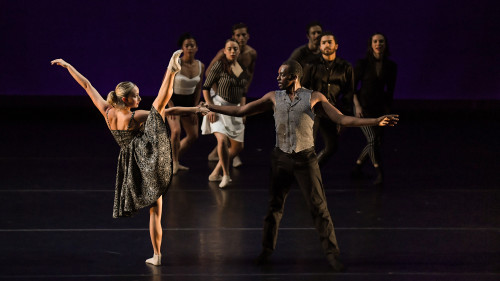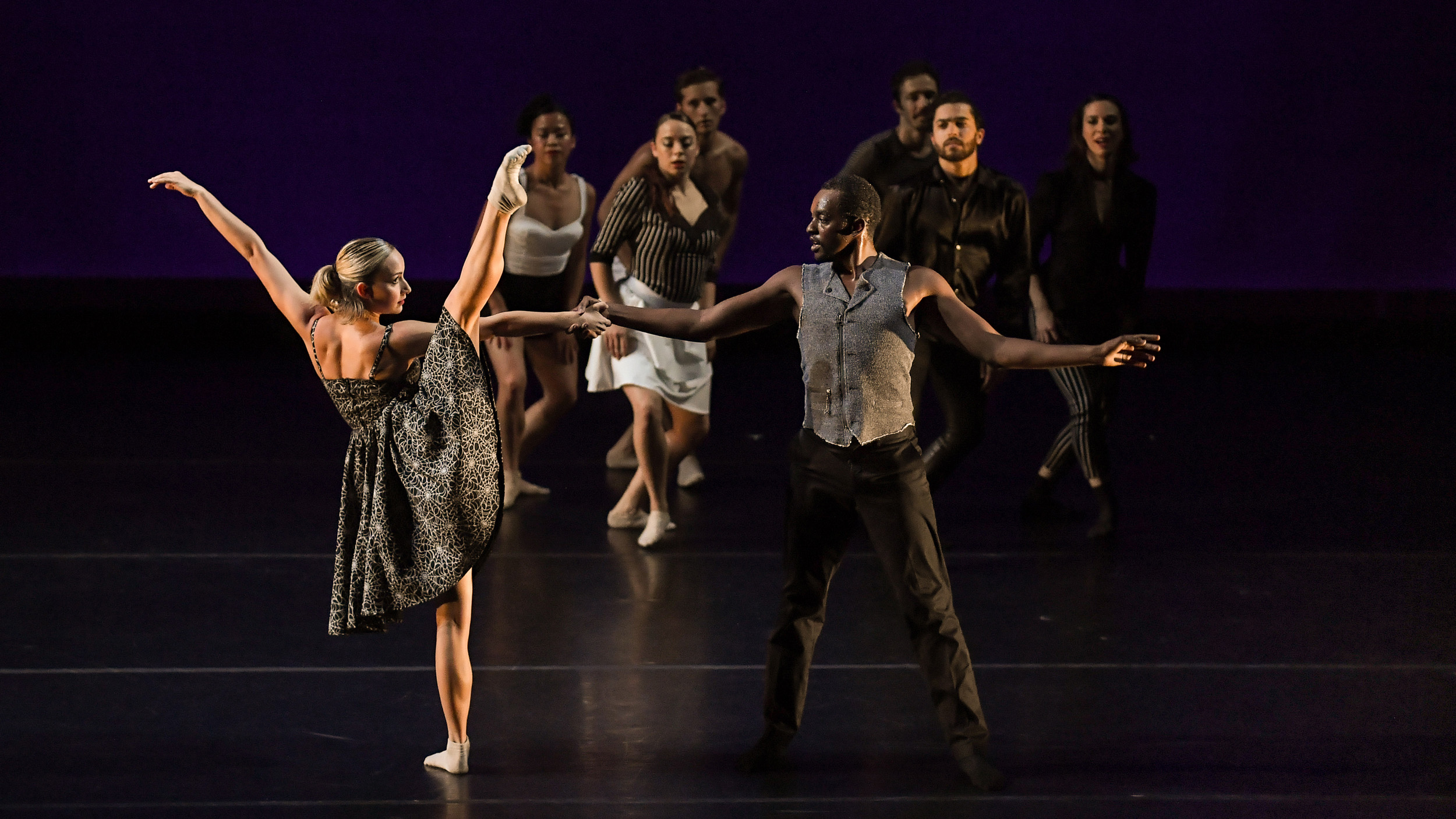 United States Various Composers and Choreographers: Dancers of BODYTRAFFIC, Wallis Annenberg Center for the Performing Arts, Beverly Hills, 1.6.2018. (JRo)
United States Various Composers and Choreographers: Dancers of BODYTRAFFIC, Wallis Annenberg Center for the Performing Arts, Beverly Hills, 1.6.2018. (JRo)

Dancers – Tina Finkelman Berkett, Lorrin Brubaker, Joseph Davis, Haley Heckethorn Natalie Leibert, Jessica Liu, Guzmán Rosado, Jamal White
Production:
Beyond the Edge of the Frame
Choreography – Sidra Bell
Music – Perc: My Head is Slowly Exploding and Wicker & Steel
Costumes – Raquel Barreto
Lighting – Burke Wilmore
Fragile Dwellings (excerpt)
Choreography – Stijn Celis
Music – Arvo Pärt: Da Pacem, Magnificat, Nunc dimittis; Pierre Boulez: Sur Incises, Messagesquisse, Anthèmes 2, performed by Hae-Sun Kang
Costumes – Stijn Celis and Company
Sets and Lighting – Erwin Redl
A Million Voices
Choreography – Matthew Neenan
Music – performed by Peggy Lee; composed by Robert Sour & Una Mae Carlisle, Johnny Mercer & Harold Arlen, C. Farrow, Irving Berlin, Mike Stoller & Jerry Leiber, Adrian Zing & Benny Goodman, Arthur Hamilton
Costumes – Company
Lighting – Burke Wilmore
George & Zalman
Choreography – Ohad Naharin
Music – Arvo Pärt; lyrics: Charles Bukowski; vocals: Bobby Smith
Costumes – Eri Nakamura
Lighting – Yona Avi Bueno (Bambi)
o2Joy
Choreography – Richard Siegal
Music – Clark Terry, Oscar Peterson, Jimmy McHugh & Dorothy Fields, Gerald Marks & Seymour Simons, Count Basie, Guy Wood & Robert Mellin
Music Editing – David Karaganis
Costumes – Rita DiLorenzo and Richard Siegal
Lighting – Burke Wilmore (original design by Kindred Gottlieb)
In a well-balanced program that featured both the angst-ridden and the joyful, BODYTRAFFIC, founded ten years ago, presented a dance troupe in command of its material. More often than not, young contemporary dance companies offer works that skew heavily towards confronting the grimmer realities of urban life and decay. Reflecting the times we live in is critical in contemporary art, but so too is the celebration of the human spirit that dance, with its ability to rise above the gravitational boundaries of everyday life, can supply.
Fortunately, the company’s directors, Lillian Barbeito and Tina Finkelman Berkett, are alive to the necessity of presenting the full spectrum of emotional experience from the feverish Beyond the Edge of the Frame to the spirited o2Joy.
The world premiere of Matthew Neenan’s A Million Voices proved to be an intoxicating exploration of life, love and war, danced to the shimmering voice of Peggy Lee. Neenan’s choreography was quirky, elegant, humorous and perceptive – incorporating both the times that Lee’s music reflected and the modern age. In a compelling sequence to Lee’s rendition of ‘Is That All There Is?’ – Mike Stoller and Jerry Leiber’s wise and wry cabaret-infused song on coping with life’s tragedies and disappointments – dancers in a line paraded across the rear of the stage in a series of slow-motion kicks. Appearing like circus performers from a black and white Fellini film, one wore a long hoop skirt and held a parasol aloft, one held a water bucket, another lumbered by in striped pants. The ensemble’s posturings were pitch-perfect and felt like tender and wise commentary. With hints of Twyla Tharp, Jerome Robbins and Pina Bausch, Neenan achieved a very unique creation.
Ohad Naharin’s choreography was on view in George & Zalman. To music by Pärt and the words of Bukowski as vocalized by Bobby Smith, Tina Berkett in a fierce solo enacted a series of movements that corresponded to phrases uttered in Bukowski’s poetry. The phrases were repeated over and over, along with the corresponding steps, ultimately building into a round of exhausting maneuvers that reduced Berkett to a helpless puppet. Movement merged with language to present the trials of life in all its disarray.
The first piece, Beyond the Edge of the Frame, choreographed by Sidra Bell, featured the grim and grating techno/industrial music of Perc. The dancers’ legs stirred the air like spoons in thick soup. Torsos shuddered and arms seemed to reach out earnestly as if posing unanswerable questions. The dance vocabulary hovered between balletic and spasmodic; though mostly derivative, it did have the salutary effect of showing off the versatility of this strong ensemble.
An excerpt from Stijn Celis’s Fragile Dwellings to the music of Pärt and Boulez found dancers dressed in gauzy white, perched beneath vertical strings of light that descended from the ceiling. To a quasi-religious score that gave way to Boulez’s more modernist music, dancers seemed trapped in the catastrophic present, driven by expressive arms that conveyed raw feelings. Swooping, swooning and arching backs in inverted supplication: the choreography felt somewhat predictable, though the inventive set of hanging lights, which ultimately reconfigured into vertical rooms, seemed to hold interesting possibilities for more structured dance patterns.
The program concluded with o2Joy, a breezy romp to an assortment of midcentury jazz. It was the peppermint after dinner, refreshing the palate with its zestful spirit.
Jane Rosenberg
